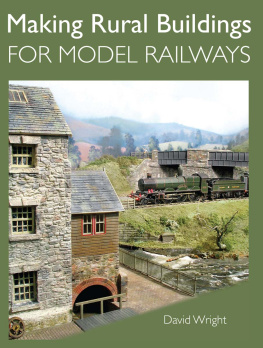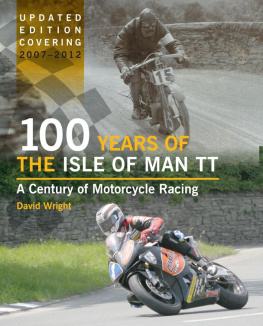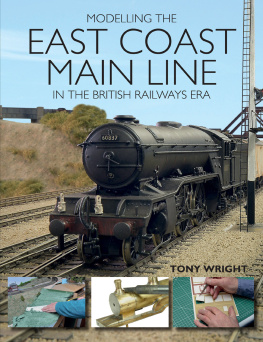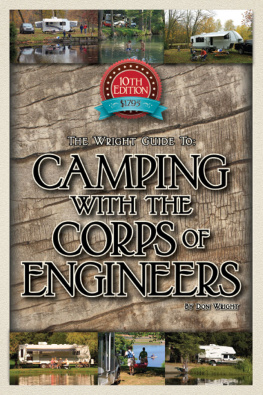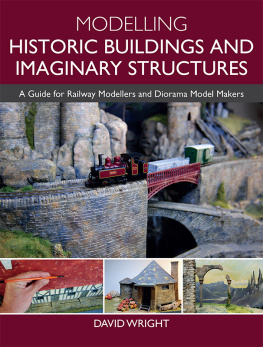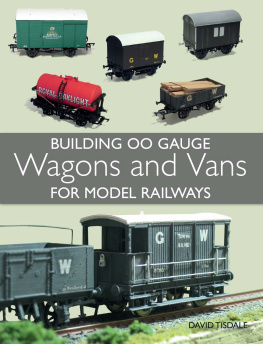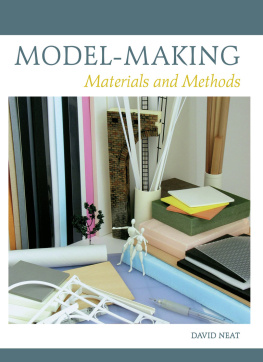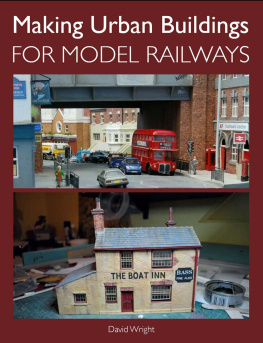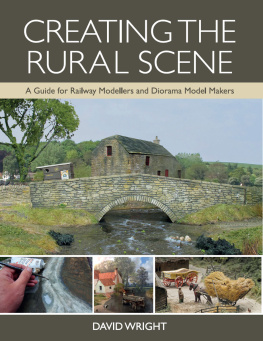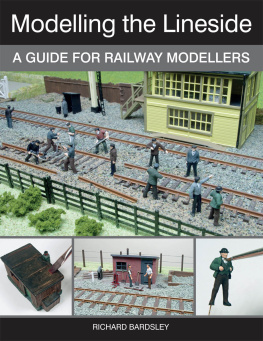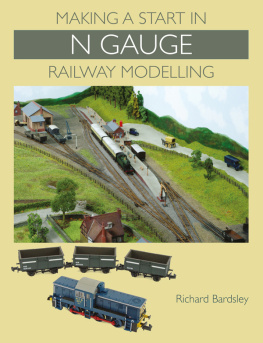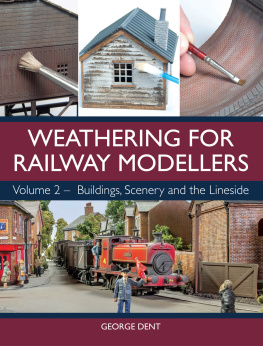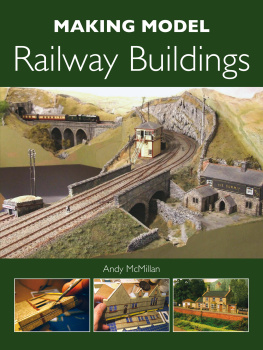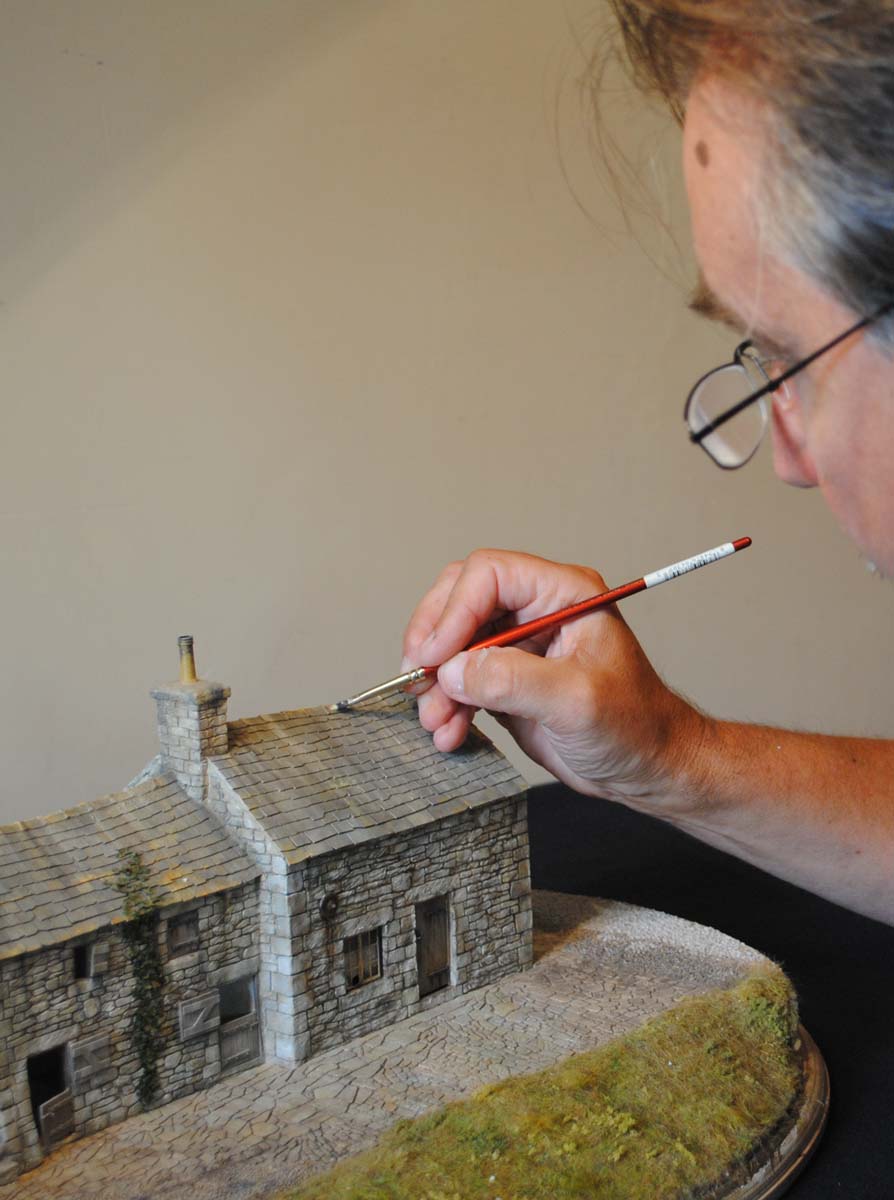
First published in 2013 by
The Crowood Press Ltd
Ramsbury, Marlborough
Wiltshire SN8 2HR
www.crowood.com
This e-book first published in 2013
David Wright 2013
All rights reserved. No part of this publication may be reproduced or transmitted in any form or by any means, electronic or mechanical, including photocopy, recording, or any information storage and retrieval system, without permission in writing from the publishers.
British Library Cataloguing-in-Publication Data
A catalogue record for this book is available from the British Library.
ISBN 978 1 84797 560 7
Dedication
I would like to dedicate this book to my good friend Dave Richards. Dave has always supported me, giving me encouragement with my model making. He is also credited with originating a good number of the photographic images in this book, for which I am very grateful.
Front cover image: A scene from the mill on the authors layout Tawcombe. Photo: Steve Flint, courtesy of Railway Modeller magazine.
Frontispiece image by Dave Richards.
CONTENTS
PREFACE
From as long as I can remember, I have had an interest in making things. This interest has combined with an ability to observe things around me. From a very early age I would find myself recording what I saw, by making rough sketches. My father always encouraged me and indeed I must have inherited some of his artistic skills, as he was a talented artist himself. He also had a talent to design and make useful items for the home, which again must have rubbed off on my young mind. Like most young boys growing up in the fifties and sixties, I was bought a train set for a Christmas present. The first was a Hornby clockwork, set up on the living room floor. Then a few years later I was given a Tri-ang TT train set. This time my father and elder brother had fixed the layout down to a large baseboard with scenery. I remember it vividly as it gave me many hours of pleasure.
It was not long before I found myself wanting to add more buildings to the layout. My father saw my interest and bought me a card cottage kit. With his help, I made my first model building, thus setting the seeds of my future interest. From this beginning, many more buildings were to be constructed from the card Bilt-Ezee range. I remember making regular visits to the local model shop in Derby to select the next one to build. However, it would not be long before I started to design my own buildings using the card fold-up technique. My mother would save any cereal packaging for me to draw out and construct my first scratch-built efforts. At the same time as the visits to the model shop, my father would take me to see the wonderful O gauge Kirtley Midland model railway exhibit, then housed in the Derby Museum. This model made a lasting impression on my young mind, always being impressed with the quality of the buildings and scenery this layout displayed. Little did I know then that forty years on, I would be constructing the buildings for the rebuilt version of Kirtley, now housed in the Silk Mill, Derbys former Museum of Industry. Through my teenage years other interests were soon to take over, like girls, pop music, football and so on.
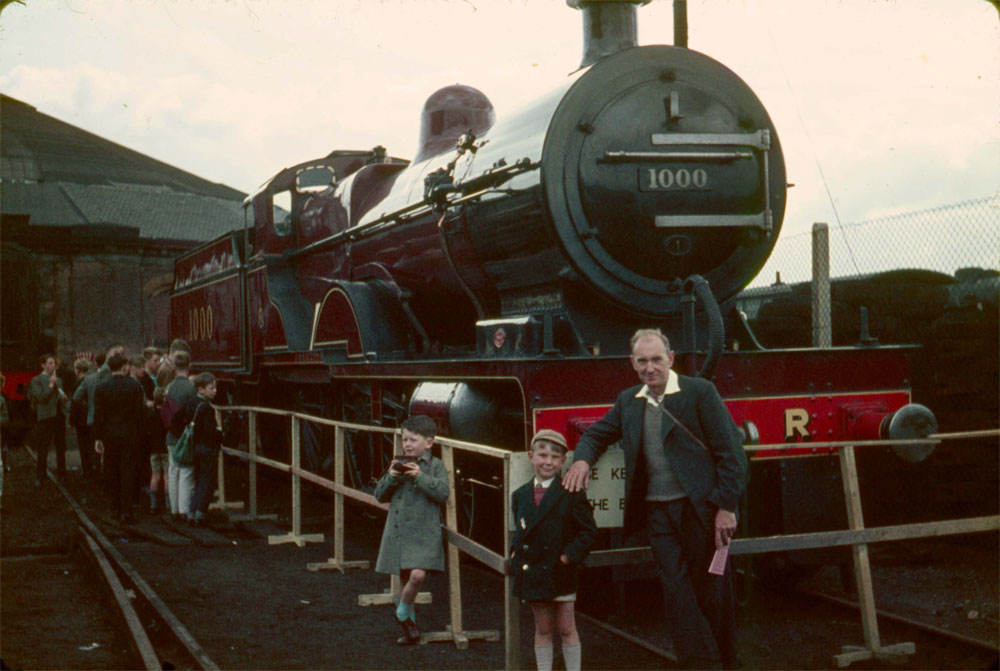
Aged six with my father at the 1962 Derby Locomotive Works Open Day. Railways, both full size and in miniature, were always a part of this young boys life.
Photo: Colin Wright
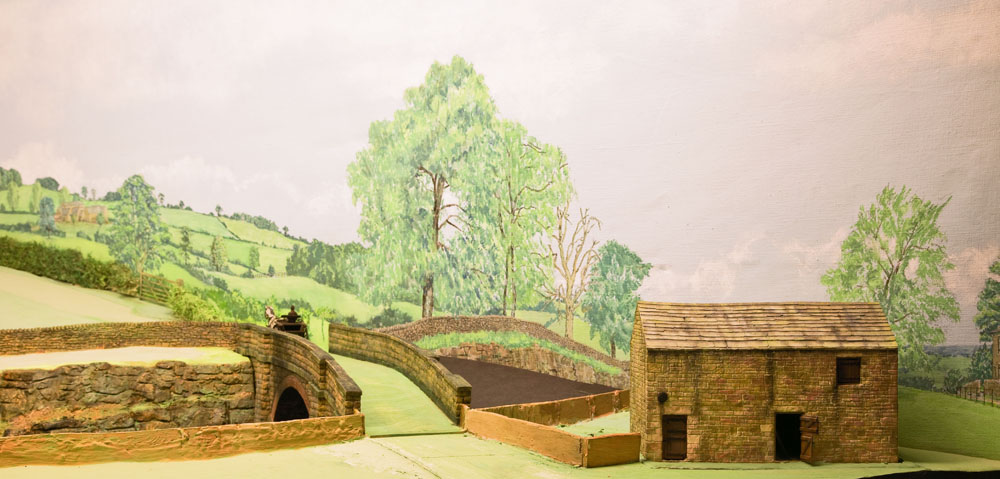
Washgate Barn was the first commissioned model building that I constructed for the Midland Railway exhibit housed in the Silk Mill, Derby. This layout is a rebuild of the original model of Kirtley, which had proved such an inspiration for me as a boy.
Photo: Jeff Mander
My artistic ability was to give me a career as a graphic designer and illustrator. From time to time the job would involve model making, such as creating models of exhibition stands for companies exhibiting their products and services at the National Exhibition Centre. My interest in model railways was rekindled after I was invited along by a work colleague to the local Model Railway Club. The interest from those early years was soon revived with the desire to create a layout and replicate the buildings of the selected area on which I based my model railway. My interest was extended with a visit to Pendon Museum in Oxfordshire. The quality of the model buildings and scenery, representing rural Britain in the 1920s and 1930s, is exceptional and I would strongly recommend a visit. The buildings on display certainly gave me the inspiration to improve my scratch buildings and it became my benchmark to achieve something like the standards seen at Pendon. I hope by reading this book, you too will be inspired to have a go at creating some of our rural buildings for your model railway and have the satisfaction of building something you can be proud of.
The hobby of model railways is probably stronger now than it has ever been. This is evident from the amount of exhibitions around the country and the thousands of people visiting them. It is also true that most of us strive to achieve higher standards in our models. The market has never been better, especially for off-the-shelf examples. The amount of detail that can now be reproduced on an out-of-the-box model is truly amazing. Anybody just starting out, or getting back into the hobby, will be spoilt for choice with all the locomotives, rolling stock and, of course, the buildings that are now available. The scratch-builder, however, has not been left out completely. There is also an increasing range of materials and accessories available to help give you plenty of scope to build a good model.
Model railways have always been a good platform for learning and trying out new skills. Indeed, the hobby includes carpentry for baseboard construction, electronics for wiring, engineering for locomotive building the list goes on. For me, though, the most enjoyable part of the hobby is the artistic element, whereby perhaps we can allow ourselves to be a little more imaginative and not be too concerned about the constraints that other areas of the hobby might demand. The skills required to achieve a reasonable standard when creating a building are achievable for the beginner, so long as you are prepared to take your time and always observe the world around you. There is no reason at all why you should not be rewarded with convincing results.
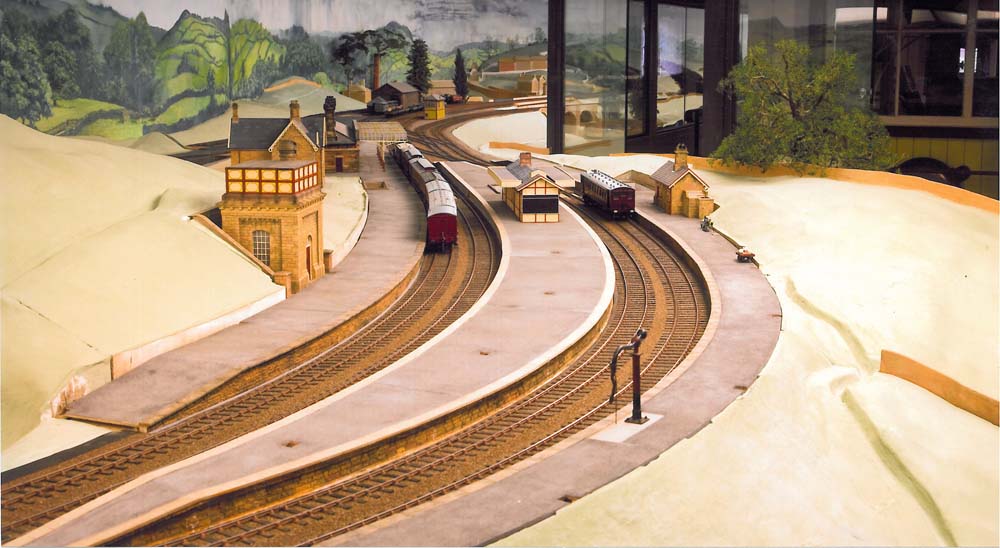
The 7mm Midland Railway exhibit, housed in the Silk Mill, Derbys Museum of Industry. The water tower and the nearest station buildings were all built by the author as commissions.
Photo: Jeff Mander
Reading this book, and following the techniques and suggestions I have given, you should achieve something towards that goal. Remember that the main object of any hobby is to learn new things and, most importantly, to have fun doing it. The aim of this book is to provide you with the information, ideas and inspiration to be more creative when modelling rural buildings and to achieve a final result you can be justly proud of.
Next page
